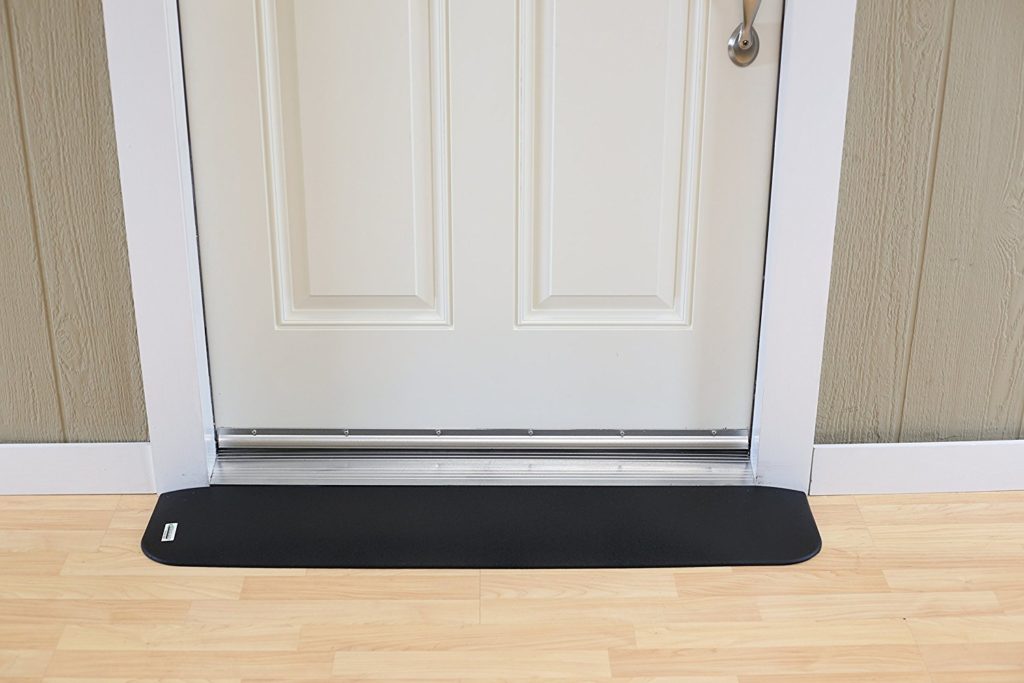One consideration in choosing an ADA-compliant wheelchair threshold ramp rubber or aluminum is the material composition. Both rubber and aluminum ramps are available in the marketplace. SafePath Products manufactures disability access ramps made exclusively from the purified rubber of recycled tires.
Wheelchair threshold ramps composed of recycled rubber have several key advantages over aluminum handicap ramps:
- Cost. Recycled rubber is far less expensive than aluminum, and rubber ramps can cost as little as 50 percent of their aluminum counterparts.
- Safety. SafePath’s wheelchair threshold ramp rubber is highly slip resistant. This is especially important when it comes to the walking elderly for whom a single fall can be life-threatening. Aluminum wheelchair ramps require special treatment and periodic maintenance for slip resistance, increasing the cost.
- Installation. Rubber threshold ramps are easily installed with silicon adhesive. No drilling or hardware is required, preserving the integrity of the ramp, the floor, and the door threshold. Furthermore, SafePath’s recycled rubber ramps naturally conform to uneven surfaces without modification and, unlike aluminum, can easily be notched around door jams if needed.
- Sound. Rubber is virtually soundless when walked upon. The noisy “click clack” of shoes or wheels clamoring over an aluminum ramp can be a major annoyance. This noise is magnified in the event of loosening hardware.
Why wheelchair threshold ramp rubber instead of aluminum?
Load weight. Aluminum ramps are inherently weak and limited when it comes to load weight. SafePath’s rubber ramps have no maximum load limits, making them safe for supporting heavy equipment, furniture, and appliances when necessary.
